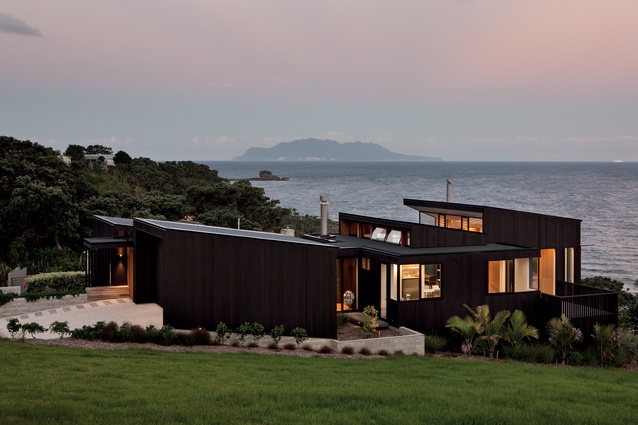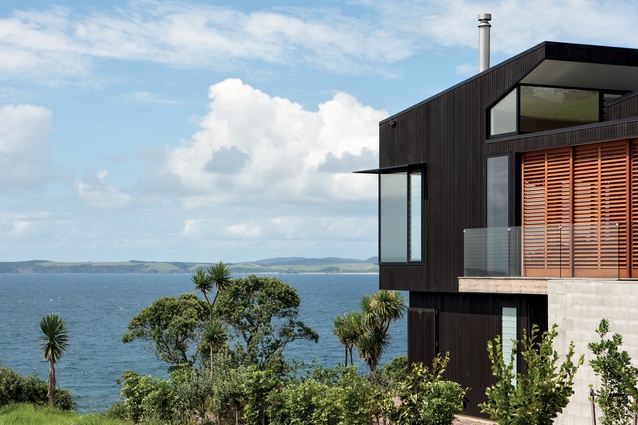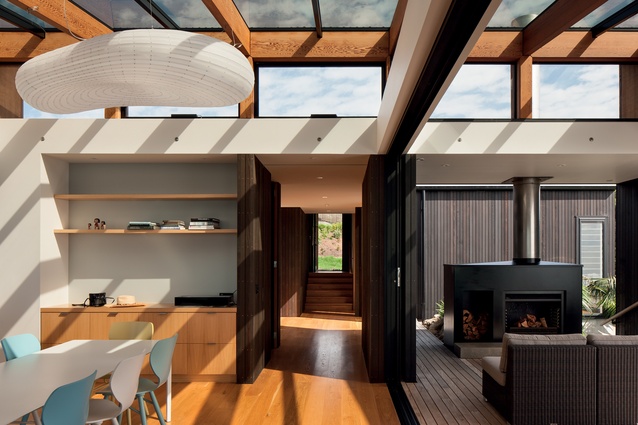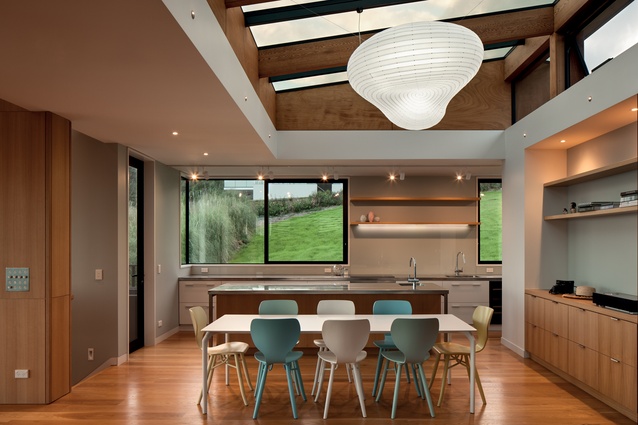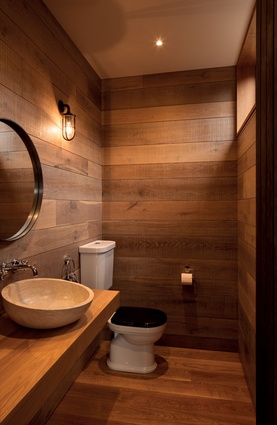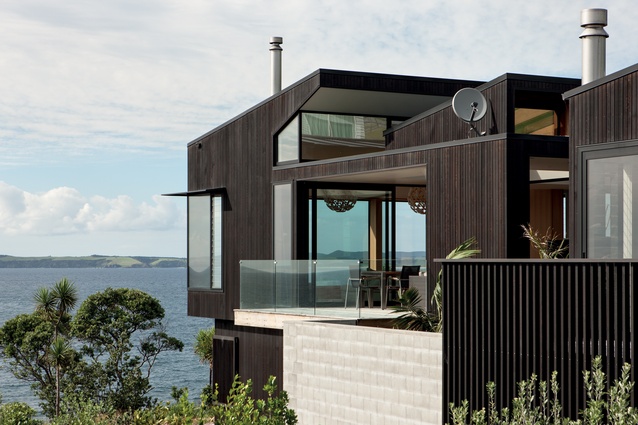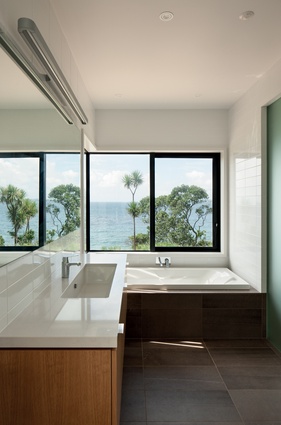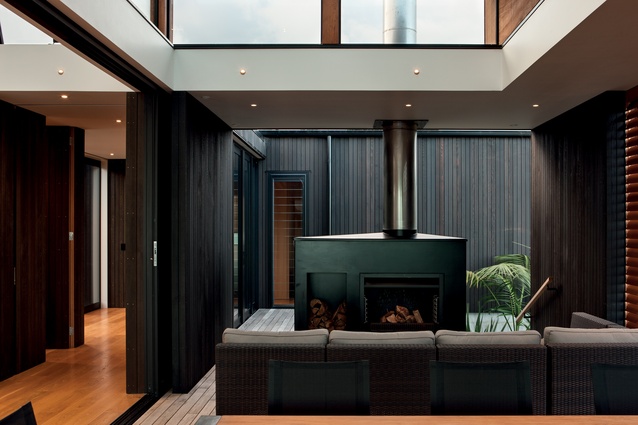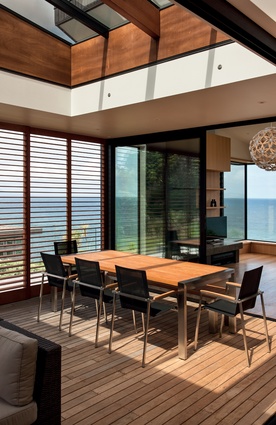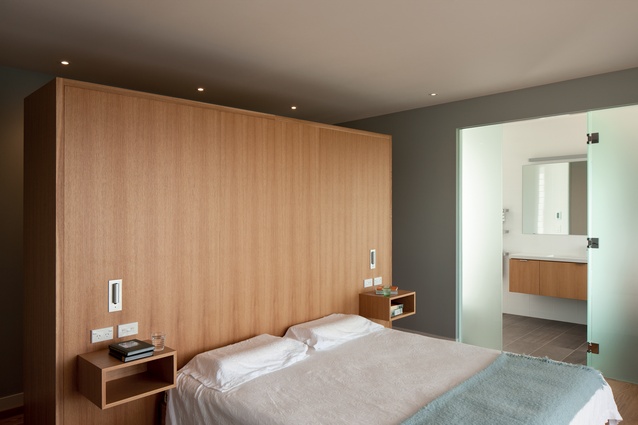Houses revisited: Leigh house
On a clifftop overlooking Leigh sits a well-planned home by Scarlet Architects that cleverly deals with a site where the sun and the view are in opposite directions. First published in 2016.
Over the past few decades our beachfronts have seen a creeping tide of suburban-style houses replacing baches and filling the sections of new seaside subdivisions.
This new house isn’t really a bach as we know it but it’s certainly not as suburban as its neighbours. Although surrounded by rapidly-sprouting holiday homes and retirement pads, the design by Scarlet Architects retains a sense of the coast, like an interesting piece of blackened driftwood brought up from the beach.
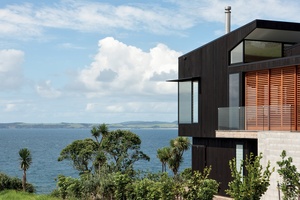
It’s set on a clifftop above Leigh, on the east coast north of Auckland, with panoramic views of the ocean from Little Barrier Island to Coromandel. This is an exposed site and much of the design reflects that with thoughtful planning to provide shelter while still making the most of the sun and views. The house hunkers down slightly like a long, low, folded sculpture; the angled clerestory roofs are prominent, like a set of waves rolling inland.
The front of the house doesn’t give much away, split into two boxes – one the garage and one housing a couple of guest rooms. The entry is in the centre, guarded with a slatted gate, like a bach all battened down against the weather and shut up while the owners are absent. This balances the need for privacy with the seaside desire for openness but also nicely dramatises the journey through the house from roadside to clifftop and the revelation of the spectacular view.
The entry porch is a place to kick shoes off and as we walk through the deliberately narrow hall and down a few steps we find the house is split into two separate pavilions. The roadside end has two guest rooms and a bathroom tucked away, cleverly separating visiting friends or extended family from the owners’ patch at the front. Visitors, as the old saying goes, are like fish: they begin to smell after a few days – and as you imagine at the beach, after a weekend of too much sun and alcohol, relationships could deteriorate even faster.
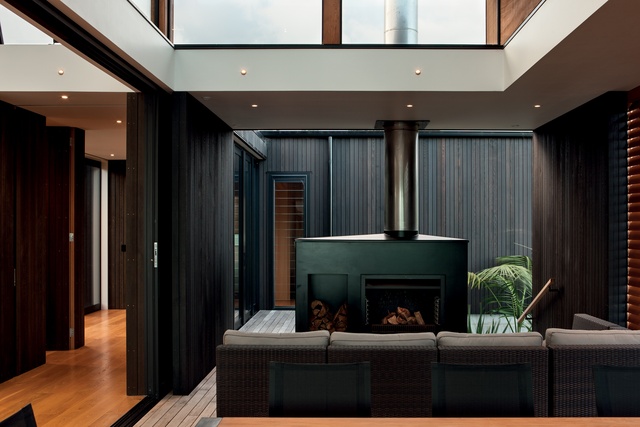
Between the pavilions a garden makes its way through the house from one side to another and allows the kitchen, living and deck areas to open in this direction as well, enhancing the sense of relaxed and loose spaces connected with the outdoors.
One of the hardest planning jobs for a designer is dealing with a site where the sun and view are in opposite directions. Here, the living room faces south-east and drinks up the sea view but the north-west clerestories scoop in late-afternoon light, especially in winter, while protecting the interior from the high summer sun at noon and early afternoon. They act like a row of big beach umbrellas and give the house the atmosphere of a relaxed and open campsite, rather than the conventional four walls and a lid of most houses.
The site is nice and open at the moment but no doubt more neighbours will spring up on either side. To maintain privacy and to provide shelter from the prevailing winds (south-west and north-east from the sea), the large outdoor living area is laid out under the roof system as well, instead of being a large, exposed deck jutting out beyond the house.
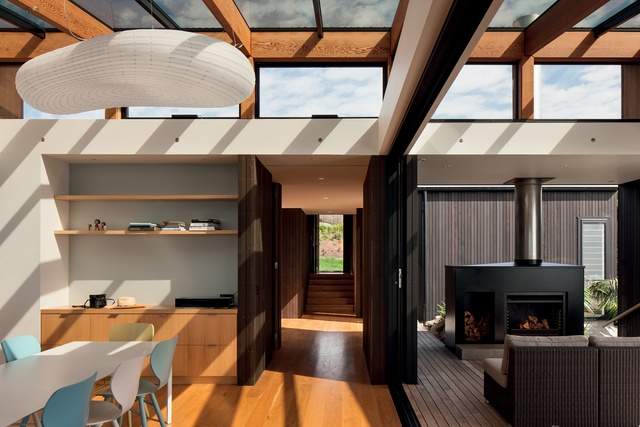
A terrace on the other side of the building, by the kitchen, also allows the barbecue to be placed in the lee of the house whatever the wind direction. Shutters and sliding screens around the exterior give the inhabitants the opportunity to shield the dwelling from wind throughout the year or from strong afternoon sunlight in summer when shade and a cold, white wine from a local vineyard are more desirable.
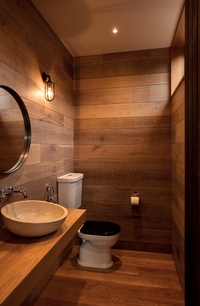
Down a level, the main bedroom and its bathroom are tucked underneath the living room with an equally good view of the Gulf, as well as opening out onto a clifftop area landscaped with native planting. These rooms too are provided with shutters and screens, too, if you don’t want to wake up to the rising sun the following morning.
The black-stained cedar exterior and the use of exposed timber beams and plywood wall linings through much of the interior maintain a slightly rustic and natural atmosphere in the house, quite different from the claddings and linings we associate with the city.
Many of the rooms have wide, open shelves rather than cupboards and this too contributes to the character of the place as well: one can imagine them filling up, like a bach, with old books, photos and the bits and pieces the grandkids have brought up from the beach.
Although it has more mod cons than the traditional bach, like a lizard sunning itself in coastal scrub, this house shows us how we can live at the beach in an appropriate manner without turning the neighbourhood into suburbia.
MATERIAL SELECTOR
Jane Aimer talks about some of the materials and concepts utilised in Scarlet Architects’ design for Leigh House.
The ceiling in the main living areas appears to pop up; what was your design rationale and what materials and techniques were incorporated to achieve this?
We raised the roof in sections towards the west to get the most afternoon sun deep into the house. This is the opposite side to the view and is overlooked by existing and potential future houses, so we limited the windows and replaced them with roof and clerestory glazing instead. The raised roof form continues across the interior and exterior living spaces to help blur the boundaries between inside and outside, and to create a cohesive whole.
What was the concept behind the guest toilet and what materials were utilised?
Our clients had a fun idea that the guest WC, hidden behind a secret door, would be reminiscent of an old kiwi bach dunny. With this in mind, we lined the walls with timber and sourced old-looking fixtures and fittings. We drew the line at bits of newspaper instead of toilet paper!
Click here to see more Houses Revisited. And sign up to our email newsletters to receive Houses Revisited straight to your inbox.
Note: These are stories from our archives and, since the time of writing, some details may have changed including names, personnel of specific firms, registration status, etc.

